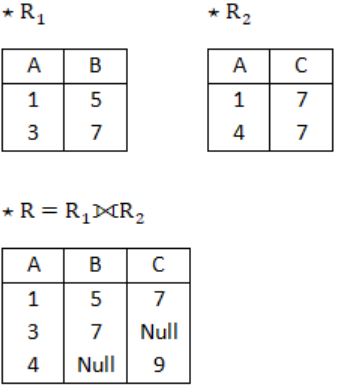Web-Technologies
October 3, 2023Demand-Paging
October 3, 2023Database-Management-System
|
Question 22
|
Consider two relations R1(A,B) with the tuples (1,5), (3,7) and R2(A,C) = (1,7), (4,9). Assume that R(A,B,C) is the full natural outer join of R1 and R2. Consider the following tuples of the form (A,B,C): a = (1.5,null), b = (1,null,7), c = (3,null,9), d = (4,7,null), e = (1,5,7), f = (3,7,null), g = (4,null,9). Which one of the following statements is correct?
|
R contains a,b,e,f,g but not c, d.
|
|
|
R contains all of a,b,c,d,e,f,g
|
|
|
R contains e,f,g but not a,b
|
|
|
R contains e but not f,g
|
Question 22 Explanation:

⋆ So, from the above resultant table, R contains e, f, g only but not a, b.
Correct Answer: C
Question 22 Explanation:

⋆ So, from the above resultant table, R contains e, f, g only but not a, b.
Subscribe
Login
0 Comments
